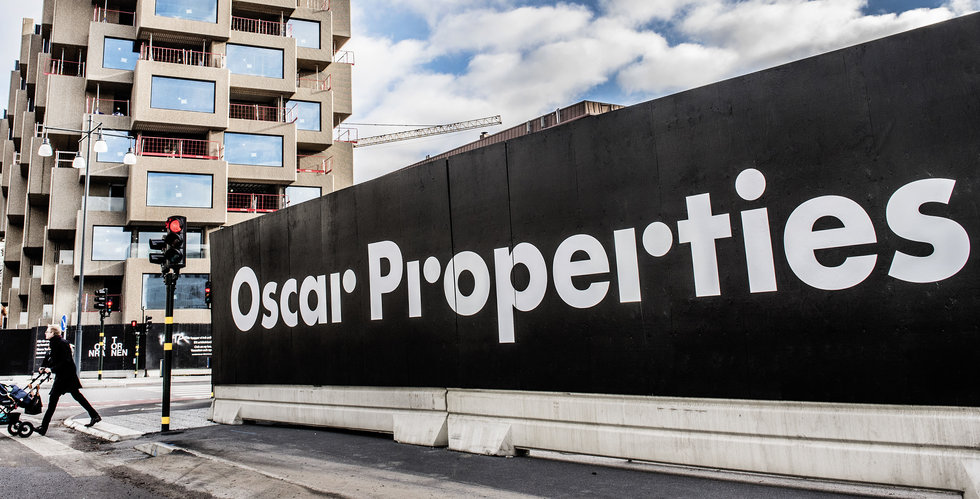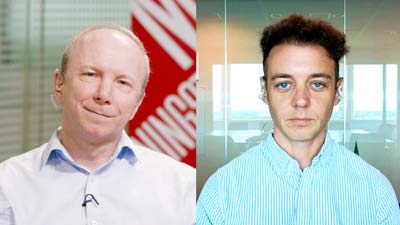
Analyst Note | Nov 04, 2020
Having created a more decentralized and profitable business than previous economic downturns, narrow-moat Sandvik announced at its Capital Markets Day it will now aim to shift its focus toward growth opportunities. The company is maintaining its 5% revenue growth target through the cycle, which includes a contribution of approximately 2.5% from acquisitions. We expect some growth areas it highlighted to be met with greater competition and thus lower margins than some of Sandvik’s high-margin-generating core businesses. Our forecasts remain largely unchanged and we maintain our fair value estimate.
Sandvik has struggled to grow since 2019 and thus a more growth-orientated strategy is necessary, especially given the structural headwinds that face some of its end markets face, such as the automotive and aerospace industries. We don’t believe growth will come at the expense of organic investment such as product innovation, which has been a common feature for the business. The company’s trough EBIT margin remains at its previous 16% target, which it's currently achieving as at third-quarter 2020 despite the massive drop in sales, most notably across the industrial manufacturing-dependent machining solutions segment.
Having significantly strengthened its balance sheet between 2016 and 2020 to only a slight net debt position, Sandvik enjoys headroom to pursue acquisitive growth. The growth areas that were highlighted include: building on its midmarket position in the machining solutions division where Sandvik competes using a single brand strategy compared with its multibrand approach in the premium segment, additive manufacturing, and growing its surface mining product offering, which includes a more automated product offering in its mining segment.
Sandvik’s strong market position across its machining and mining segments, allows the company to utilize its existing close relationships with customers to gain a greater share of wallet.
Business Strategy and Outlook | Nov 04, 2020
Having now created a more decentralized and profitable business than it did during previous economic downturns, Sandvik is now looking to shift its focus toward growth opportunities. The company is maintaining its 5% sales growth target through the cycle, which includes a contribution of approximately 2.5% from acquisitions. We expect some growth areas highlighted at the Capital Markets Day to be met with greater competition and thus lower margins than some of Sandvik’s high-margin-generating core businesses.
Sandvik has struggled to grow since 2019 and thus a more growth-orientated strategy is necessary, especially given the volatile nature of demand and structural headwinds that some of its end markets face, such as the automotive and aerospace industries. We don’t believe growth will come at the expense of organic investments such as product innovation, which has been a common feature for the business. We expect Sandvik’s dividend to return in the foreseeable future and it should continue with its 50% payout ratio.
Having significantly strengthened its balance sheet between 2016 and 2020 to only a slight net debt position, Sandvik enjoys headroom to pursue acquisitive growth, mostly through bolt-on mergers and acquisitions. Growth areas highlighted include building on its midmarket position in the machining solutions division where Sandvik competes using a single brand strategy compared with its multibrand approach in the premium segment, additive manufacturing, and growing its surface mining product offering (where it has a number two position), which includes a more automated product offering in its mining segment. Sandvik’s strong market position across both its machining and mining segments allows the company to utilize its existing close relationships with customers to gain a greater share of wallet.
Economic Moat | Nov 04, 2020
We believe Sandvik has been able to carve out an economic moat primarily from its strong market position in niche applications in its mining and rock technology segment. While we are reluctant to award Sandvik’s machining solutions segment with a moat despite its strong presence in the metal cutting market, we think this business does not significantly detract from the company’s attractive returns on invested capital. Recent divestments of low-margin/no-moat businesses that historically formed part of the mining division should raise the segment's profitability closer in line with its most direct competitor, Epiroc. This has helped contribute to Sandvik’s current ROIC of 20%, well above its weighted average cost of capital of 8.9%.
We fail to award Sandvik’s machining solutions business a moat despite its leading market position. Sandvik’s tools are consumable in nature and are ISO standard products, which therefore exhibit no positive differentiation versus those of peers such as Kennametal and Iscar. Customers tend to exhibit little brand loyalty and thus there is no pricing power, with all premium players’ tools typically being present at their customers manufacturing sites. The company’s record of regular product innovation and R&D through the cycle is impressive; however, the short operating life of tools coupled with an innovation cycle of around six years provides enough time for competitors to replicate its characteristics once future restocking decisions are required. Furthermore, new developments do not tend to be groundbreaking enough that they can enjoy long-lasting pricing power.
We acknowledge that Sandvik has led Kennametal in terms of production methods and supply chain optimization, resulting in industry-leading margins. However, Kennametal has subsequently begun to follow suit, reducing any temporary cost advantage Sandvik may have enjoyed. Kennametal’s operating margin is expected to catch up to Sandvik’s through spending approximately $300 million over three years, indication that any cost advantages through self-help or manufacturing innovation is unlikely to be sustained for a significant duration of time.
We assign a narrow moat to the mining and rock technology business where the company commands pricing power in many of its niche applications such as hard rock mining. Customers, which include the world’s largest mining companies, are willing to pay a premium for Sandvik’s record of reliability as well as the regular availability of spare parts and services resulting in a lower total cost of ownership. This is achieved through Sandvik’s worldwide service network stretching across 160 countries of its own employees, who are often situated in remote locations, which helps reduce the significant cost of equipment downtime. Sandvik’s on-the-ground presence, often permanently located on its customers' operations, also provides the company with a learning curve advantage for future product innovation. Given that much of Sandvik’s equipment is operated underground and is thus subject to large degrees of wear and tear, customers also place a greater emphasis on quality and safety in order to protect reputational damage. This record of reliability stretches back many decades with customers, which has resulted in Sandvik and Epiroc enjoying dominant positions in niche applications such as surface drilling, underground drilling, and underground loaders with combined market shares in certain niche segments at approximately 80%.
We think the above-mentioned barriers to entry would deter not only new entrants but also larger mining equipment suppliers that operate in other areas of the mining value chain. We view it to be unlikely for these companies to allocate large sums of capital into R&D and upskilling its existing sales and service network, given the relatively small market size compared with their existing end markets. Sandvik has also followed a direct sales method, which has resulted in intimate client relationships that would be difficult for new entrants to break especially given the risk-averse nature of mining customers.
The business has also increased its proportion of outsourced production, which is expected to allow the company to maintain strong profitability when commodity prices drop and demand for new equipment falls. In addition, aftermarket participation rates of approximately 50% on its installed base indicates characteristics of switching costs helping to protect profitability. We acknowledge that certain consumables may lack pricing power in a market downturn, but spare parts and services are mostly proprietary, which low-cost competitors would be unable to replicate.
We attribute the historical margin differential between Epiroc and Sandvik to be due to Sandvik’s product mix. Sandvik has had a more extensive product range that includes lower-margin offerings such as crushing and screening, coal cutting, and the oil and gas business (which is being divested). The margin differential has narrowed since Sandvik has divested several noncore operations focusing only on markets where it has or can see itself as having a leading or number-two market position with better profitability. We expect this to help contribute to Sandvik’s excess economic returns.
We view the material technology segment as a no-moat business. Sandvik is currently subscale to competitors such as Nippon Steel and Sumitomo Metal. The segment also faces fierce competition from low-cost producers in China, making it difficult for the business to command any cost advantage. The uncertain nature of oil prices limits Sandvik’s ability to command any pricing power on its products. This business is currently being internally separated from Sandvik, with the possibility of a separate listing.
Fair Value and Profit Drivers | Oct 16, 2020
We raise our fair value estimate to SEK 146 per share from SEK 138 to reflect higher profitability as a result of cost-saving initiatives, which will translate into higher profit margins during a subsequent recovery. We forecast medium-term operating margins to be 19%, a 300-basis-point improvement from our 2020 forecast.
The benefits of a diversified portfolio have helped Sandvik limit the impact from a sharp drop in volume in its machining solutions segment (41% of sales). Higher commodity prices during 2020 have led to an increase in demand for Sandvik's mining equipment and services, which account for 44% of group sales.
We expect a prolonged recovery for the machining solutions segments with sales returning to 2019 levels during 2023. The segment is highly exposed to the aerospace, automotive, and energy sector.
Successful execution of cost savings and active portfolio management have helped Sandvik’s operating margins and cash flow hold up better than previous downturns. We expect these actions and the benefits of operating leverage to translate into structurally higher profit margins once volume picks up.
Risk and Uncertainty | Nov 04, 2020
Our uncertainty rating for Sandvik is high. Sandvik’s customers operate in markets that are either affected by general economic conditions or face a high degree of cyclicality. Approximately 44% of Sandvik’s revenue is attributable to the mining industry, whose capital expenditure is based on the uncertain nature of commodity prices. Demand for products from Sandvik’s machining solutions segment is directly affected by global industrial production, which is dependent on the global economic environment. Furthermore, the segment is largely exposed to the automotive industry, which is exposed to general economic conditions as well as structural changes in the industry. This limits Sandvik’s ability to plan for the long term and provides limited visibility on financial performance. This has been a key reason behind Sandvik’s efforts to reduce its manufacturing footprint, have more flexible production methods, and place a greater emphasis on aftermarket parts and services in its mining division.
There is also a new leadership team at Sandvik, with the CEO, president of Sandvik Mining, and president of machining solutions all having announced their departure in 2019. Stefan Widing took over as CEO position in February 2020, succeeding Bjorn Rosengren. Rosengren joined Sandvik in 2015 and established the decentralized business model for the company, which has been successfully implemented. Rosengren helped make the organization more focused, a feature that was most likely observed during his time at Atlas Copco, which has had a record of lean operations and high profitability. It is uncertain how much low-hanging fruit is still available in terms of cost-cutting initiatives.
Stewardship | Oct 16, 2020
We have a Standard stewardship rating for Sandvik. Historically, management has allocated capital effectively, reinvesting in the company and generating growth through acquisitions and product development, which ultimately rewarded shareholders via an approximately 50% dividend payout ratio. We remain impressed by management’s response to weak periods of demand by adjusting production to ensure profitability and cash flow generation remains strong throughout the cycle. Insignificant alignment with minority shareholders and a new management team are the primary reasons behind our Standard rating.
Under Bjorn Rosengren’s leadership (2015-20) management made capital allocations that were well considered accounting for the economic cycle. This included divesting businesses outside Sandvik’s core machining and mining operations to focus on core operations, despite having paid significant amounts for under prior leadership. The Varel acquisition in 2014 (one of Sandvik’s largest M&A transactions) increased exposure to energy prices when the oil price was above $100; the company recently announced its decision to divest this business, resulting in an impairment of SEK 3.9 billion being recorded. Nevertheless, we expect these divestments to boost midcycle profitability and have also placed Sandvik’s balance sheet in a strong position. Sandvik’s acquisition strategy has shifted to small tuck-in acquisitions to enhance its product portfolio, which exhibit lower integration risk than large transformational deals. Sandvik has prioritized reducing its leverage, a decision we applaud, given the cyclical and short-cycle nature of the business.
Sandvik has targeted a 50% dividend payout ratio through the cycle, which appears sustainable since debt no longer needs to be reduced and net debt is covered by the company’s free cash flow. M&A can therefore be used to enhance Sandvik’s growth profile, with the company aiming for a 2%-3% impact on sales growth. We also place a positive mark next to management’s decision to focus on production efficiencies and working capital management despite periods of strong growth. This includes successfully executing cost-cutting measures at the first sign of slowdown in sales, which has allowed Sandvik’s machining solutions segment to maintain an adjusted operating margin above 20% despite four consecutive quarters of top-line decline.
Sandvik has new leadership, with Stefan Widing taking over as CEO in February 2020, joining from Assa Abloy. The machining solutions and mining and rock technology segments are also under new leadership since 2019. Widing previously worked under Sandvik’s chairman at Assa Abloy, and we don’t expect a material shift in our stewardship rating.





















